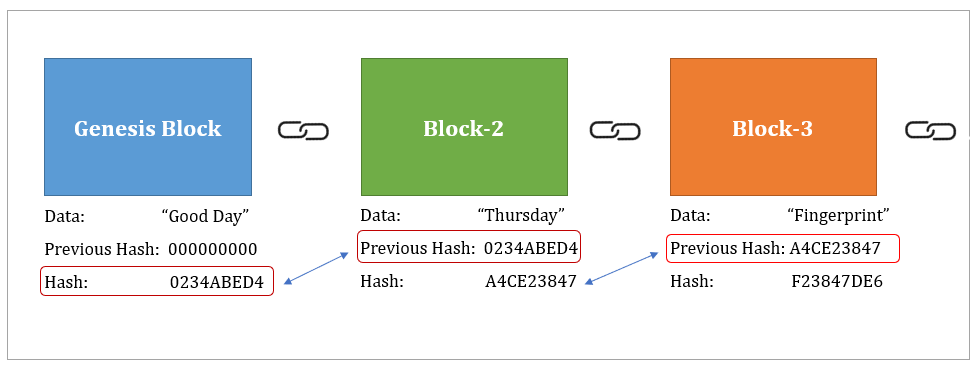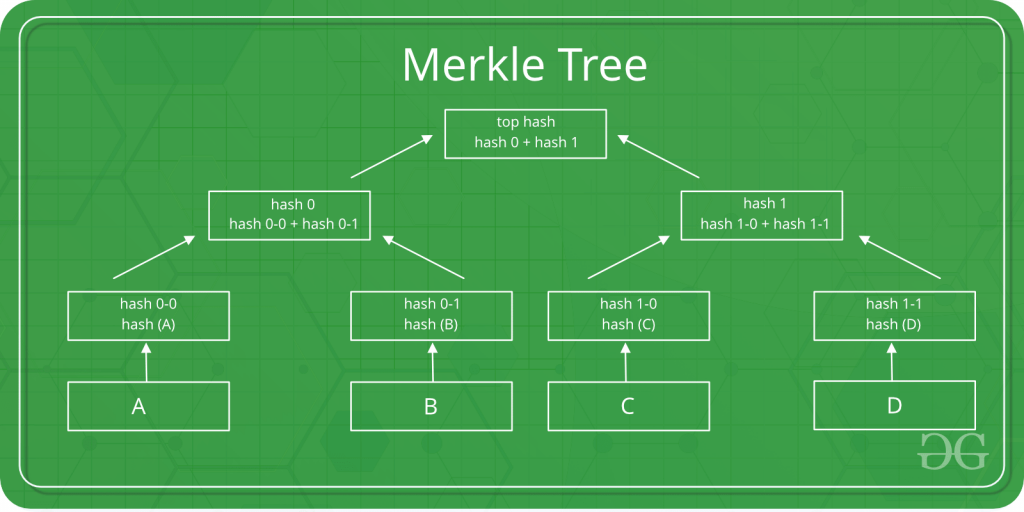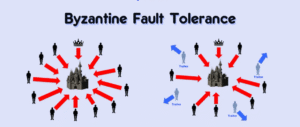Blockchain technology powers cryptocurrencies like Bitcoin and Ethereum, but its core strength lies in its data structures. Two key components—Merkle Trees and hashes—make blockchains secure, efficient, and trustworthy. If you’re a developer or just curious about how blockchains work, this guide will break down these concepts in a simple, beginner-friendly way. Let’s dive in!
What Are Hashes in Blockchain?
A hash is like a digital fingerprint for data. It’s a fixed-length string of characters generated by a mathematical function called a hash function. No matter how big or small the input data is—a single word or an entire book—the hash function produces a unique output of the same length.
For example, the SHA-256 hash function, widely used in Bitcoin, turns any data into a 64-character string. Change even one letter in the input, and the hash changes completely. This property makes hashes perfect for verifying data integrity in blockchains.

Hashes are used in blockchains to:
- Link blocks together securely.
- Ensure data hasn’t been tampered with.
- Provide a compact way to reference large amounts of data.
Why Are Hashes Important for Developers?
As a developer, understanding hashes is crucial when working with blockchains. Hashes are used in:
- Block Headers: Each block in a blockchain contains a header with a hash of the previous block, creating a chain of trust.
- Transaction Verification: Hashes ensure that transactions are authentic and unchanged.
- Smart Contracts: Hashes secure the inputs and outputs of programmable contracts on platforms like Ethereum.
By mastering hashes, you can build applications that interact with blockchains securely and efficiently.
Introducing Merkle Trees
A Merkle Tree is a binary tree structure that organizes hashes to make data verification faster and more efficient. Imagine you’re trying to verify thousands of transactions in a blockchain. Checking each one individually would be slow. Merkle Trees solve this by summarizing all transactions into a single hash, called the Merkle Root.

Here’s how a Merkle Tree works:
- Hash Transactions: Each transaction is hashed individually.
- Pair Hashes: These hashes are paired and hashed again to create a new layer of hashes.
- Repeat: The process continues, pairing and hashing, until a single hash—the Merkle Root—is left.
The Merkle Root is stored in the block header, acting as a compact summary of all transactions in that block.
Why Merkle Trees Matter
Merkle Trees are a game-changer for blockchains because they:
- Save Space: Instead of storing every transaction in the block header, only the Merkle Root is needed.
- Speed Up Verification: You can verify a single transaction without checking the entire block, thanks to the tree structure.
- Enable Light Clients: Devices like mobile phones can verify transactions without downloading the entire blockchain.
For developers, Merkle Trees are essential when building lightweight blockchain apps or optimizing data storage.
How Merkle Trees and Hashes Work Together
Hashes and Merkle Trees are like peanut butter and jelly—they’re better together. Hashes provide the security, ensuring data integrity. Merkle Trees organize those hashes into an efficient structure, making it easy to verify large datasets. Together, they enable blockchains to be both secure and scalable.
For example, in Bitcoin, every block contains thousands of transactions. The Merkle Tree summarizes them into a single Merkle Root, which is hashed into the block header alongside the previous block’s hash. This creates a chain where tampering with any transaction would change the Merkle Root and break the chain.

Real-World Applications for Developers
If you’re a developer, here are some ways you can use Merkle Trees and hashes:
- Building Decentralized Apps (DApps): Use Merkle Trees to verify user transactions efficiently.
- Creating Cryptographic Proofs: Merkle Trees allow you to prove that a transaction is included in a block without revealing the entire dataset.
- Optimizing Data Storage: Store only the Merkle Root and reconstruct the tree as needed.
These tools are not just for cryptocurrencies—they’re also used in peer-to-peer file sharing (like BitTorrent) and distributed databases.
Getting Started with Merkle Trees and Hashes
Ready to dive into coding? Here are some steps to experiment with these concepts:
- Learn a Hash Function: Start with SHA-256. Libraries like Python’s
hashlibmake it easy to generate hashes. - Build a Simple Merkle Tree: Use a programming language like Python or JavaScript to create a Merkle Tree from a list of transactions.
- Explore Blockchain APIs: Tools like BlockCypher let you interact with real blockchain data.
By experimenting with these concepts, you’ll gain a deeper understanding of how blockchains work under the hood.
Conclusion
Merkle Trees and hashes are the backbone of blockchain technology. Hashes ensure data security, while Merkle Trees make verification fast and efficient. For developers, mastering these data structures opens the door to building secure, scalable blockchain applications. Whether you’re creating a DApp, optimizing data storage, or just exploring the tech, understanding these concepts is a must.
Start small, experiment with code, and soon you’ll be navigating the world of blockchain like a pro. Have questions or ideas? Share them in the comments below!






















